#bioluminsecence tho...i wish I could draw it better
Explore tagged Tumblr posts
Note
Zora headcanons please?
There's so many kinds of Zora; how about I do them all? :D
River Zora
So, the River Zora were the first kind of Zora we were ever met with in the LoZ series.
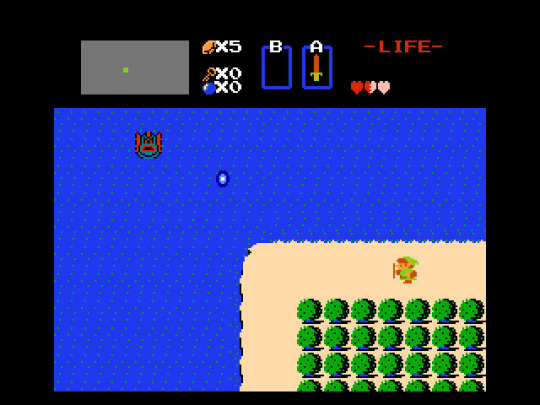
Capable of shooting fireballs, this variant of Zora is EXTREMELY territorial and defensive of their domain. And with good reason; their eggs are a rarity--a River Zora might lay only two eggs in their entire lifetime, which can reach up to 800 years. And monsters, especially water-based monsters, tend to be scavengers, meaning that if a Zora isn’t careful, their nest can be raided and the eggs devoured before they have a chance to react.
The River Zora are vibrantly colored, with the ability to puff up to three times their normal size and possessing side-fins to use as flashy warning signs against potential predators. Living in a place like Hyrule means you have to have all kinds of tricks up your sleeve!
But all that flash isn’t just for show; when they’re stressed, their skin releases a toxic substance that can cause paralysis in nearby enemies.
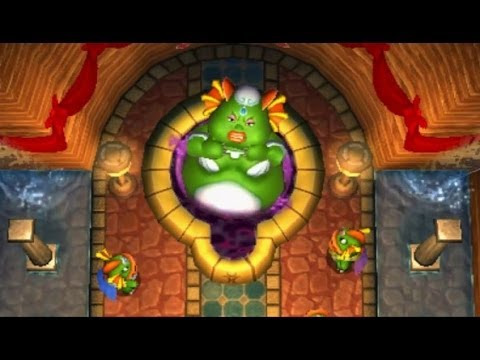
You can see it here in Queen Oren’s fountain, how the water’s gone dark purple (along with the size magnification mentioned previously).
Their mouths contain special glands that secrete a kind of organic napalm. When creating a fireball, they gather some of this substance in their cheeks and ignite it with a spark of electricity, similar to an electric catfish. This ability takes time for them to develop, and fireball accuracy is a point of pride among their soldiers.
Their diet consists of mostly trout, and their domain is hidden in a waterfall beside Death Mountain. However, by BoTW’s time, the River Zora have fled Hyrule for distant Holodrum, where there’s remarkably less threat of extinction.
Zora Warriors
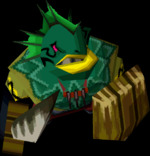
These are actually the result of River Zora adapting to salinity! Also called “Geozards” to differentiate them from their ancestors, these Zora have lost their toxicity and pufferfish-like abilities in exchange for denser muscle mass and near-impenetrable scales. The frill atop their heads is their only biological sex indicator; frill means male, no frill means female, and the sex of a Geozard is determined by the temperature their egg was kept in, like alligators!
They also have an increased capacity for firepower compared to their more docile inland counterparts, an adaptation developed in the presence of more aggressive waterlife out in the open ocean. The napalm they produce is a LOT harder to get off of yourself, so watch out!
Lake Zora
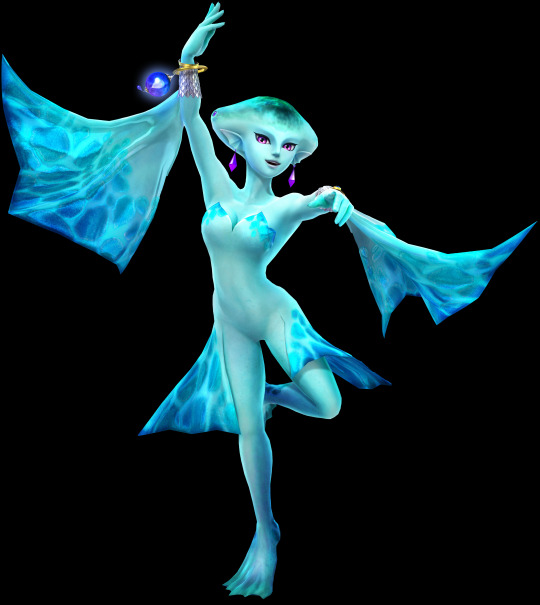
Most famous for their queen, Ruto, Lake Zora are blue-white in coloring and have fins that mimic the patterns clear water would create on the seafloor. Unlike their vibrantly-colored firebreathing cousins, these Zora are stealth hunters, blending in with the water and staying very still before darting out to catch their prey in a split second.
The well-known fondness for jewelry that Zora have started with this subspecies, where earrings, necklaces, and gemstones were first utilized as bait, similar to metallic fishing lures. Since then, the fondness for shiny decoration has only grown, peaking when the Zoroyal family was entrusted with the Spiritual Stone of Water. Since receiving it, the gifting of sapphires between Zora has been a token of engagement, similar to how rings are in our culture.
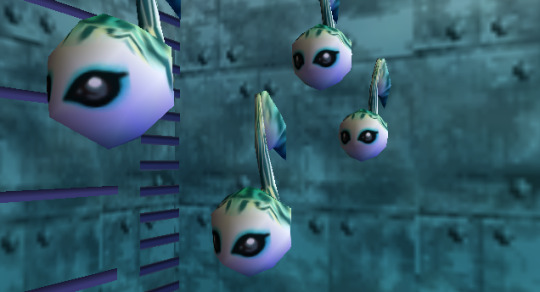
Early stages of Zora life strongly resemble tadpoles; upon hatching, they’re little more than eyes and a sharklike tail. As they mature, however, the rest of their body develops, tucked into the curve beneath their faces, before eventually emerging into a Zora guppy.
Zora guppies are...clumsy, to say the least. Their bodies haven’t grown quite enough to support their heads yet, so they need neck support at all times. It’s just like human babies! It takes a Lake Zora about three years to get to the point where they can support their own head weight, so during that time, the parents have to be extremely diligent with their baby’s safety.
Bay Zora
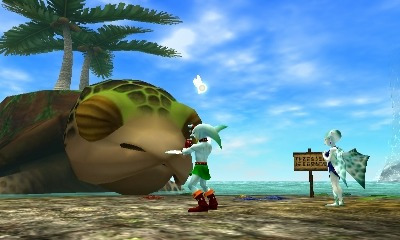
The Zora that live in the Great Bay of Termina are almost identical to their Hyrulean counterparts.
Almost.
These Zora have had to adapt both to salt water and the presence of predators larger than them, so on top of the skills the Lake Zora possess, they also have a faster swimming speed, a tolerance to acid, and the ability to create a weak electric field around themselves to ward off potential attackers.
Falls Zora
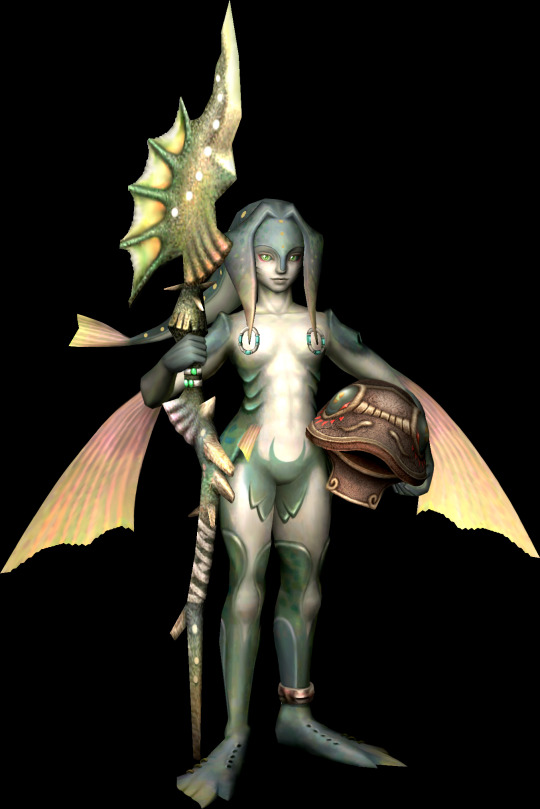
This subspecies of Zora actually marks an evolutionary transition point between the Lake Zora and the Sea Zora. They still possess muted coloration to blend into the water for stealth attacks, but they’re starting to branch out; sunset-colored fins and bioluminescent spots on their headtails mark the development of several key traits BoTW Zora possess.
It’s also the point where we first see sign of the red and purple color mutations.
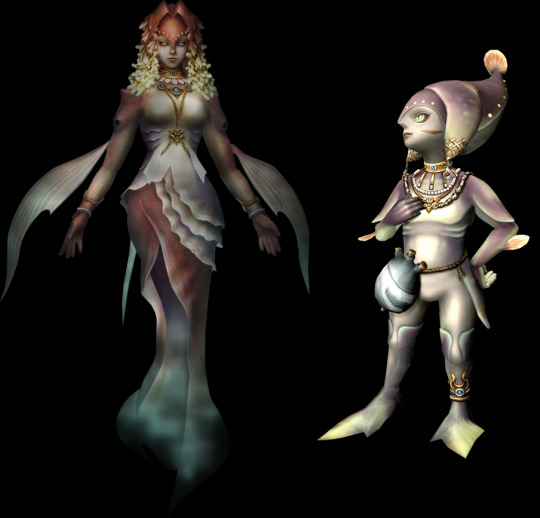
But by far the most interesting point of this particular era in Zora history is their cultural development.
This is the point in time where they start decorating their domain with the trademark Zora silver we know them for in BoTW, with intricate lacing designs in semi-see-through walls.
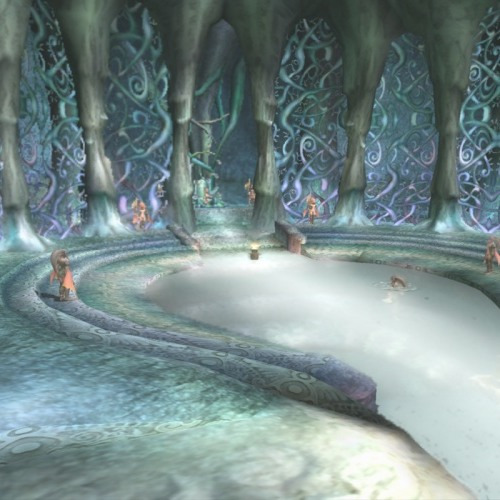
We also see the first use of Zora spears, along with masks worn by soldiers and metallic jewelry, signifying that the Zora have begun to develop the means to forge tools.
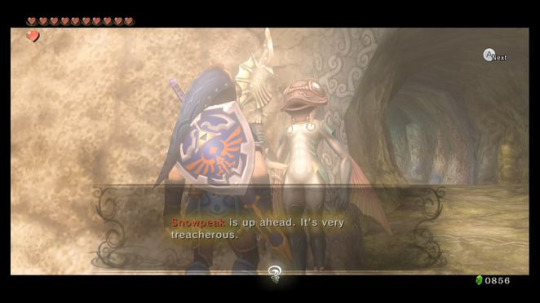
This is huge, from a worldbuilding perspective. Aquatic races tend to get locked into a stone-age level of tech, because it’s insanely difficult to forge metals without fire and without cooking yourself. The techniques they use to make these weapons and decorations, though they remain a carefully guarded Zora secret, are the reason they can make grand palaces like we see in BoTW.
This era also marks the appearance of Zora armor; as in, clothing created from Zora scales.
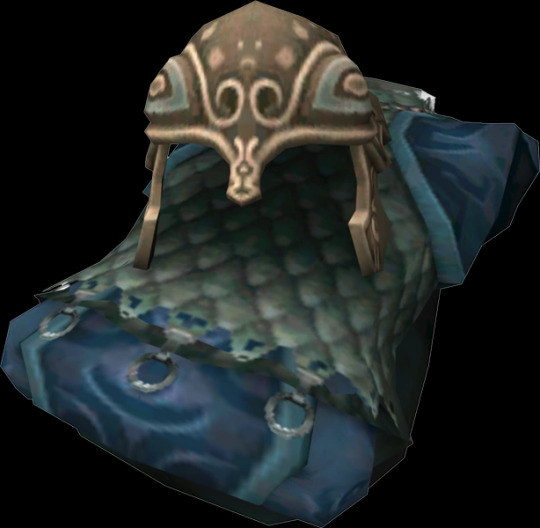
Magical garments for breathing underwater existed before, but the presence of this here means that Zora can both shed and craft their scales into a kind of chainmail mesh. In later years, this kind of garment would become the equivalent of exchanging sapphires, specifically for inter-species relationships in Hyrule.
And, finally:
Sea Zora

These are probably the Zora you all were expecting. I’ve covered the reasoning behind their coloration and physical variation here, so let’s get to the stuff I haven’t quite covered yet, shall we?
The Zora of BoTW are highly adapted to salt-water conditions, capable of breathing in both fresh and seawater. Their scales, however, are thinner due to generations of enjoying a peaceful lifestyle, making them highly susceptible to burns, frostbite, and electrical nerve damage. This makes elemental arrows a huge threat to the Zora population; it’s an ongoing debate in their kingdom on whether or not it should be banned.
A Sea Zora’s lifespan consists of about 20 years of being a guppy, at which point, they develop their “sea legs.” As you’ll notice, this is much longer than the standard infancy of their ancestors; while Lake Zora matured at a similar rate to humans, Sea Zora more closely resemble the lifespans of River Zora, which can lead to generations of Hylians passing by in only one Zora lifetime.
After growing out of their guppy phase, Sea Zora stay at a relatively small size, even into adulthood, until they hit their growthspurts. This final stage of Zora maturity is triggered by environmental factors, such as temperature, abundance of resources, and emotional stability, though some Zora take longer to reach that finicky balance than others. The growth stage takes about two years to finish; Mipha, a hundred years prior to BoTW, was right in the middle of hers, thus making her much smaller than other fully grown Zora at the time.
On a cultural note, Zora from this era participate in neck elongation, like many human cultures in Africa and Asia.

In this practice, coils of metal are wrapped around the neck to give the appearance of it being longer than it actually is. Contrary to popular belief, this doesn’t actually dislocate the neck and vertebrae; instead, it works by pushing the collarbones down and the chin upwards.
We can see this practice on Zora of any age, and all walks of life; it’s even present in the Zora Armor, to a lesser degree.

Notably, though, Royal Zora and Zora in direct service to the Zoroyal family haf elegant frames rather than coils, as a secondary indicator of status.
Luminous stones are popular with these Zora, and it’s believed that this started as a mirror to their developing bioluminescence. And they have a lot of it; unfortunately, however, it’s on a scale humans don’t perceive very well, as to us, the most glow we get is right above Muzu’s eyes.
But for Zora? They see A LOT.
Sidon, for example. We see him like this:

But Zora night vision isn’t as good as ours, so they’d see something more like this instead:
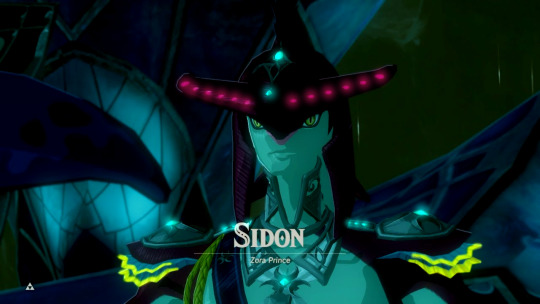
(Not an accurate depiction, a rough estimate done by someone with little art skills)
The spots on his head, the brightly colored edges of his fins, and the luminous stones all stand out, letting Zora identify each other in murky waters easily.
Sea Zora eyes possess special cells in them specifically for detecting luminescence. These disappear in strong light:
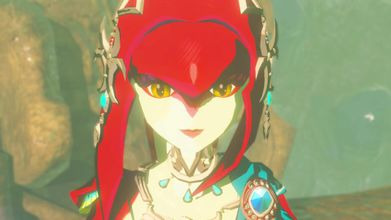
But are visible in darker settings, like rainy Zora’s Domain, in the form of tiny dots on the outer edge of the iris.
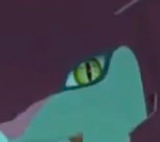
These cells work by catching miniscule amounts of light and color and reflecting them, causing weak dots to become much more pronounced, at the cost of their night vision overall.
Hope this answered your questions about the Zora!
#loz#zelda#headcanons#botw#worldbuilding#guys there are so many subtypes of zora#SO MANY#bioluminsecence tho...i wish I could draw it better#zora#also i just realized i wrote 'takita' instead of 'tottika' in the last post so press f in the chat#i refuse to proofread this
276 notes
·
View notes